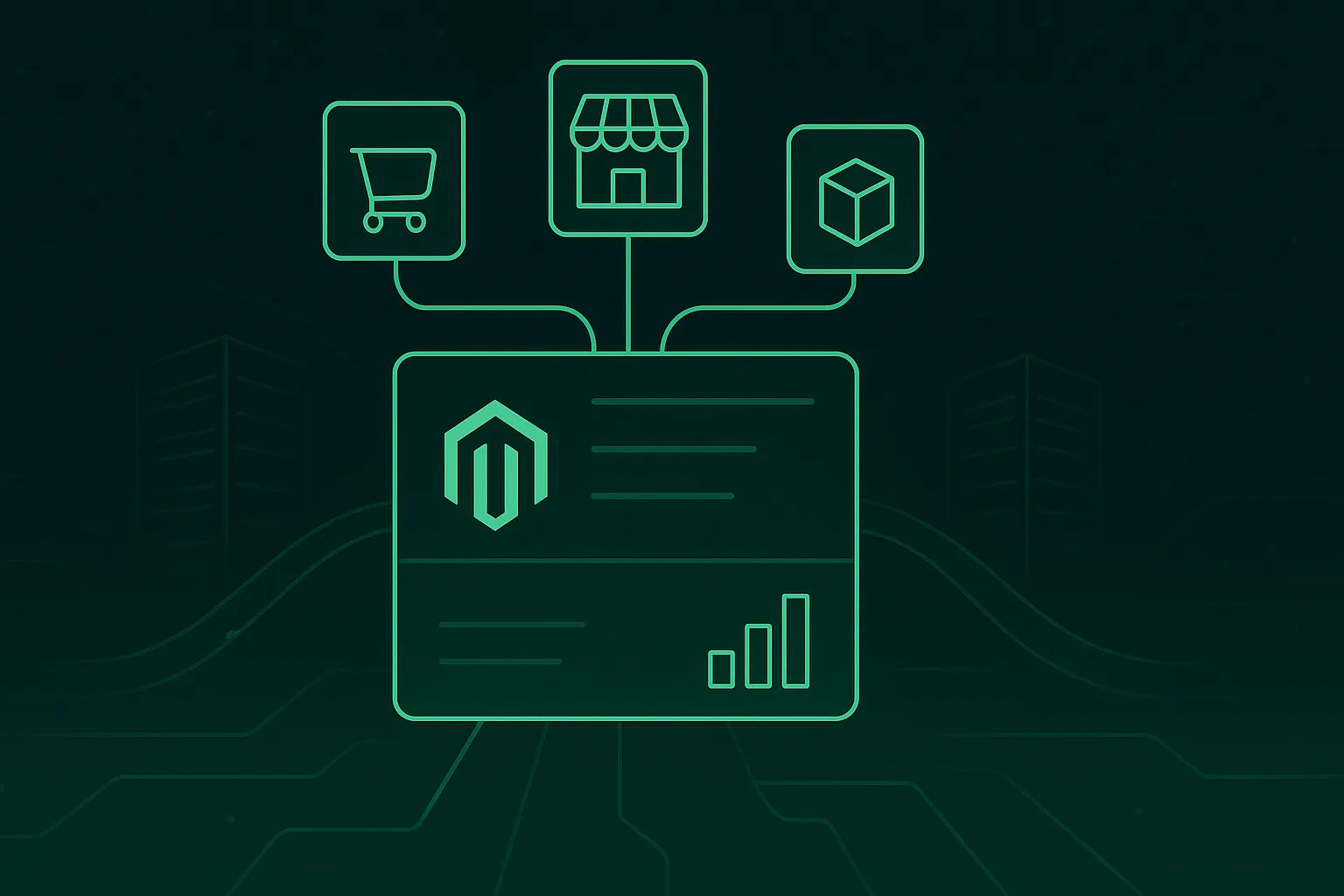Shadow AI in B2B E-commerce: Hidden Risks and Fixes
Unapproved AI tools are creeping into B2B e-commerce. Learn the risks—data leakage, bad pricing, compliance gaps—and a practical plan to govern AI safely.
B2B buying is shifting fast. Procurement teams want broader catalogs, reliable delivery, and contract-friendly workflows—without adding new suppliers one by one. That’s why multi-vendor marketplaces are becoming the growth engine for Magento merchants in 2025. By aggregating supply, you can expand assortment, reduce stock risk, and deliver a single, modern buying experience. Below is a practical playbook for the features, architecture, integrations, and metrics that matter if you plan to build or modernize a Magento-based B2B marketplace this year.

Marketplaces align to B2B realities: complex catalogs, negotiated pricing, and strict SLAs. They let you grow without owning every SKU or warehouse.


Focus on the operational backbone. If these building blocks are mature, growth scales cleanly.

Start with Magento (Open Source or Adobe Commerce) and add a marketplace module or custom capabilities, then compose services around it. Keep the storefront headless if you need omnichannel speed or multiple customer apps.


B2B traffic spikes, large catalogs, and heavy quoting can strain a platform. Engineer for predictable speed and safety.

AI helps you move faster, clean data, and protect margins—if governance is in place.
Use human‑in‑the‑loop reviews for sensitive actions (pricing, content, payouts) and track AI decisions for auditability.

Winning B2B marketplaces meet buyers where they work—procurement systems and ERPs.

Track both growth and operational quality. Share dashboards with vendors and your commercial teams.
Set targets by phase. For example, in the first two quarters aim to 2–3x assortment in priority categories, cut quote turnaround to under 24 hours, and reach consistent 95% on‑time ship across top vendors—while protecting margin with disciplined fee and returns policies.


At Encomage, we help you launch your marketplace the smart way — starting with an MVP focused on a specific product category and a select group of vendors. This approach allows us to validate the full operational flow — including search, pricing, RFQ, split orders, and settlements — before scaling.
With each subsequent release, we strengthen vendor onboarding and data quality, integrate procurement systems, and introduce vendor scorecards for transparency and performance tracking.
As your GMV grows, we fine-tune caching, queue throughput, and automate payouts to ensure smooth scalability. Every feature in your backlog stays aligned with measurable KPIs — driving GMV, improving conversion, and maintaining SLA excellence.
Ready to build or scale your Magento marketplace? Explore our Magento services to get started with a future-ready, high-performance platform.
Let’s build something powerful together - with AI and strategy.
.avif)


